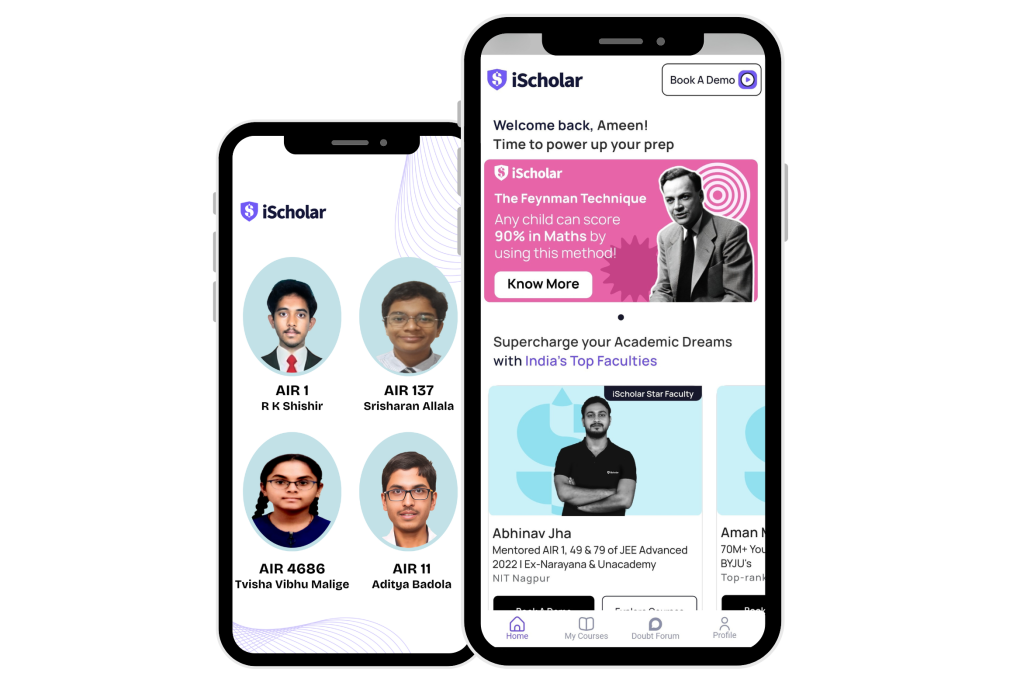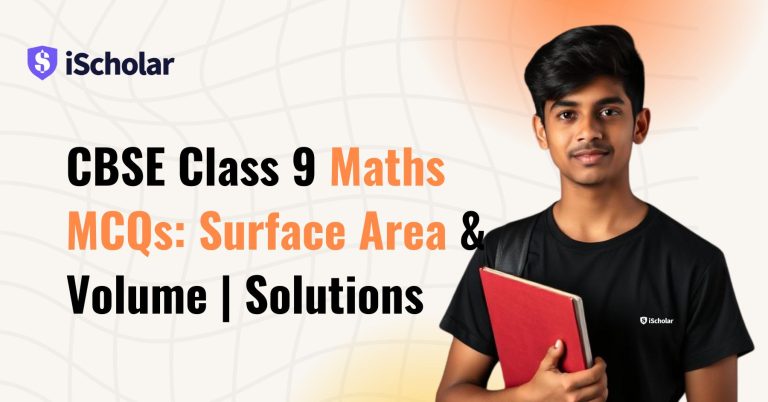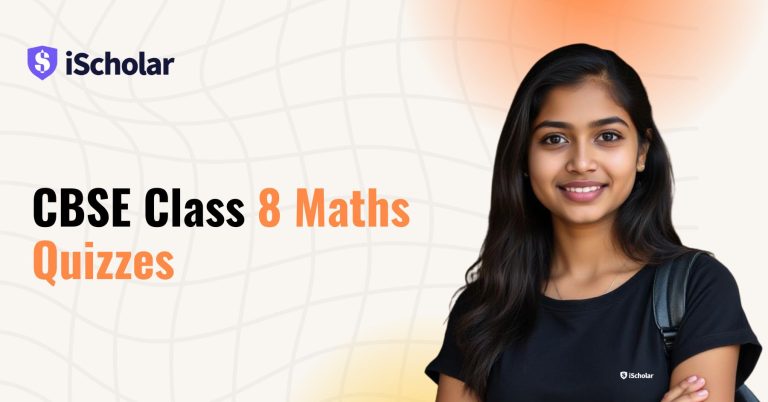CBSE Class 12 Physics Syllabus 2025-26: Physics is one of the most important and challenging subjects for Class 12 CBSE students. Whether preparing for your CBSE Class 12 Physics board exam or aiming for competitive exams like JEE and NEET, clearly understanding the syllabus, marking scheme, and exam blueprint is essential.
This article will cover the complete CBSE Class 12 Physics syllabus 2025-26, the updated question paper pattern, theory and practical marks distribution, essential units, and preparation tips. Students can also download the CBSE Class 12 Physics syllabus PDF 2025-26 at the end of the article.
CBSE Class 12 Physics 2025-26 Competency-Based Question Paper Pattern
The CBSE Class 12 Physics paper follows the competency-based question structure to test conceptual clarity, application skills, and analytical ability. The best resource for covering the whole syllabus is still the NCERT textbook; additional reference books are available for further clarification.
Students should practice solving numerical problems, revise derivations regularly, and compare their answers to NCERT exercises and examples to perform well in board exams. With the correct strategy, conceptual clarity, formula memory, and problem-solving practice, acing Physics becomes easier than anticipated.
| S. No. | Bloom Typologies (as per NEP 2023) | Total % |
| 1 | Easy difficulty level: Demonstrate Knowledge / Understanding | 38% |
| 2 | Medium difficulty level: Application-based | 32% |
| 3 | Hard difficulty level: Analysis / Evaluate / Create | 30% |
| Total | 100% |
CBSE Class 12 Physics Marking Scheme & Blueprint 2026
The Class 12 Physics Blueprint for the academic session 2025 – 26 is divided into two parts: Theory and Practical Work. The detailed marks distribution is given below:
CBSE Class 12 Physics 2025-26 Theory Marks Distribution
| Units | CBSE Class 12 Physics 2025-26 Unit Names | CBSE Class 12 Physics 2025-26 Chapter-wise Marks Distribution |
| I | Electrostatics | 16 |
| II | Current Electricity | |
| III | Magnetic Effects of Current and Magnetism | 17 |
| IV | Electromagnetic Induction and Alternating Currents | |
| V | Electromagnetic Waves | 18 |
| VI | Optics | |
| VII | Dual Nature of Radiation and Matter | 12 |
| VIII | Atoms and Nuclei | |
| IX | Electronic Devices | 07 |
| TOTAL (Theory) | 70 |
CBSE Class 12 Physics 2025-26 Practical Marks Distribution
| CBSE Class 12 Physics 2025-26 Practical | CBSE Class 12 Physics 2025-26 Practical Marks Distribution |
| Two Experiments (07 + 07) | 14 |
| Practical Record | 05 |
| Activity | 03 |
| Investigatory Project | 03 |
| Viva | 05 |
| TOTAL (Practical) | 30 |
Complete Unit-wise Syllabus for CBSE Class 12 Physics 2025-26
CBSE Class 12 Physics Unit I: Electrostatics
CBSE Class 12 Physics Chapter 1: Electric Charges and Fields
- Electric charges, conservation of charge, Coulomb’s law, superposition principle.
- Electric field (point charge, dipole), electric flux, Gauss’s theorem with applications.
CBSE Class 12 Physics Chapter 2: Electrostatic Potential and Capacitance
- Electric potential and potential energy (point charge, dipole, system of charges).
- Conductors, dielectrics, polarization, capacitors (series/parallel), parallel plate capacitor, energy stored.
CBSE Class 12 Physics Unit II: Current Electricity
CBSE Class 12 Physics Chapter 3: Current Electricity
- Electric current, drift velocity, mobility.
- Ohm’s law, resistivity, conductivity, and temperature dependence of resistance.
- EMF, internal resistance, combination of cells, Kirchhoff’s rules, Wheatstone bridge.
CBSE Class 12 Physics Unit III: Magnetic Effects of Current and Magnetism
CBSE Class 12 Physics Chapter 4: Moving Charges and Magnetism
- Magnetic field, Biot–Savart law, Ampere’s law, solenoid.
- Force on moving charge/current, force between two conductors, torque on a loop, and galvanometer.
CBSE Class 12 Physics Chapter 5: Magnetism and Matter
- Bar magnet as a solenoid, magnetic dipole, and torque in a uniform field.
- Magnetic materials (dia-, para-, ferro-), magnetisation, effect of temperature.
CBSE Class 12 Physics Unit IV: Electromagnetic Induction and Alternating Currents
CBSE Class 12 Physics Chapter 6: Electromagnetic Induction
- Faraday’s laws, Lenz’s law, self and mutual induction.
CBSE Class 12 Physics Chapter 7: Alternating Current
- AC current/voltage (peak, RMS), reactance, impedance.
- LCR circuit, resonance, power in AC, power factor.
- AC generator, transformer.
CBSE Class 12 Physics Unit V: Electromagnetic Waves
CBSE Class 12 Physics Chapter 8: Electromagnetic Waves
- Displacement current, EM waves and properties.
- Spectrum (radio to gamma rays) and its uses.
CBSE Class 12 Physics Unit VI: Optics
CBSE Class 12 Physics Chapter 9: Ray Optics and Optical Instruments
- Reflection, refraction, spherical mirrors/lenses, TIR, optical fibres.
- Lens maker’s formula, prism refraction.
- Microscopes, telescopes (magnifying power).
CBSE Class 12 Physics Chapter 10: Wave Optics
- Huygen’s principle is reflection/refraction using wavefronts.
- Interference (Young’s double slit), diffraction (single slit).
CBSE Class 12 Physics Unit VII: Dual Nature of Radiation and Matter
CBSE Class 12 Physics Chapter 11: Dual Nature of Radiation and Matter
- Photoelectric effect, Einstein’s equation.
- Matter waves, de-Broglie relation.
CBSE Class 12 Physics Unit VIII: Atoms and Nuclei
CBSE Class 12 Physics Chapter 12: Atoms
- Rutherford model, Bohr model, hydrogen spectrum.
CBSE Class 12 Physics Chapter 13: Nuclei
- Nuclear composition, binding energy, fission, fusion.
CBSE Class 12 Physics Unit IX: Electronic Devices
CBSE Class 12 Physics Chapter 14: Semiconductor Electronics
- Energy bands, intrinsic/extrinsic semiconductors.
- p-n junction diode, I–V characteristics, rectifier application.
CBSE Class 12 Physics Practical Syllabus 2025-26
The record to be submitted by the students at the time of their annual examination has to include:
- Record of at least 8 Experiments [with four from each section], to be performed by the students.
- Record of at least 6 Activities [with three each from section A and section B], to be performed by the students.
- The report of the project carried out by the students.
CBSE Class 12 Physics Practical Section – A
CBSE Class 12 Physics Practical Experiments
- To determine the resistivity of two / three wires by plotting a graph for potential difference versus current.
- To find the resistance of a given wire / standard resistor using a metre bridge.
- To verify the laws of combination (series) of resistances using a metre bridge.
OR
To verify the laws of combination (parallel) of resistances using a metre bridge. - To determine the resistance of a galvanometer by the half-deflection method and to find its figure of merit.
- To convert the given galvanometer (of known resistance and figure of merit) into a voltmeter of the desired range and to verify the same.
OR
To convert the given galvanometer (of known resistance and figure of merit) into an ammeter of the desired range and to verify the same. - To find the frequency of AC mains with a sonometer.
CBSE Class 12 Physics Practical Activities
- To measure the resistance and impedance of an inductor with or without an iron core.
- To measure resistance, voltage (AC/DC), current (AC) and check continuity of a given circuit using a multimeter.
- To assemble a household circuit comprising three bulbs, three (on/off) switches, a fuse and a power source.
- To assemble the components of a given electrical circuit.
- To study the variation in potential drop with the length of a wire for a steady current.
- To draw the diagram of a given open circuit comprising at least a battery, resistor/rheostat, key, ammeter and voltmeter. Mark the components that are not connected in proper order, and correct the circuit and also the circuit diagram.
CBSE Class 12 Physics Practical Section – B
CBSE Class 12 Physics Practical Experiments
- To find the value of v for different values of u in the case of a concave mirror, and to find the focal length.
- To find the focal length of a convex mirror, use a convex lens.
- To find the focal length of a convex lens by plotting graphs between u and v or between 1/u and 1/v.
- To find the focal length of a concave lens, using a convex lens.
- To determine the angle of minimum deviation for a given prism by plotting a graph between the angle of incidence and the angle of deviation.
- To determine the refractive index of a glass slab using a travelling microscope.
- To find the refractive index of a liquid using a convex lens and a plane mirror.
- To find the refractive index of a liquid using a concave mirror and a plane mirror.
- To draw the I-V characteristic curve for a p-n junction diode in forward and reverse bias.
CBSE Class 12 Physics Practical Activities
- To identify a diode, an LED, a resistor and a capacitor from a mixed collection of such items.
- Use of a multimeter to see the unidirectional flow of current in case of a diode and an LED, and check whether a given electronic component (e.g., diode) is in working order.
- To study the effect of the intensity of light (by varying the distance of the source) on an LDR.
- To observe refraction and lateral deviation of a beam of light incident obliquely on a glass slab.
- To observe the diffraction of light due to a thin slit.
- To study the nature and size of the image formed by a (i) convex lens, or (ii) concave mirror, on a screen by using a candle and a screen (for different distances of the candle from the lens/mirror).
- To obtain a lens combination with the specified focal length by using two lenses from the given set of lenses.
CBSE Class 12 Physics Practical Suggested Investigatory Projects
- To study various factors on which the internal resistance/EMF of a cell depends.
- To study the variations in the current flowing in a circuit containing an LDR because of a variation in
(a) The power of the incandescent lamp used to illuminate the LDR (keeping all the lamps at a fixed distance).
(b) The distance of an incandescent lamp (of fixed power) used to illuminate the LDR. - To find the refractive indices of (a) water, (b) oil (transparent) using a plane mirror, an equiconvex lens (made from a glass of known refractive index) and an adjustable object needle.
- To investigate the relation between the ratio of (i) output and input voltage and (ii) the number of turns in the secondary coil and primary coil of a self-designed transformer.
- To investigate the dependence of the angle of deviation on the angle of incidence using a hollow prism filled one by one with different transparent fluids.
- To estimate the charge induced on each one of the two identical Styrofoam (or pith) balls suspended in a vertical plane by making use of Coulomb’s law.
- To study the factor on which the self-inductance of a coil depends by observing the effect of this coil when put in series with a resistor/bulb in a circuit fed by an AC source of adjustable frequency.
- To study the Earth’s magnetic field using a compass needle and a bar magnet by plotting magnetic field lines and a tangent galvanometer.
What’s New in CBSE Class 12 Physics Syllabus 2025-26
CBSE updates the syllabus regularly to reduce the burden and emphasise application-based learning. For 2025-26:
- Certain repetitive portions from units like Electromagnetic Waves have been streamlined.
- Increased focus on competency-based questions.
- Practical syllabus aligned with real-world experiments.
- Balanced distribution of marks to encourage conceptual clarity over rote memorisation.
CBSE Class 12 Physics Preparation Plan For Effective Study
CBSE Class 12 Physics Preparation Plan (Weeks 1-2): Build Strong NCERT Foundation
- Read each chapter thoroughly from the NCERT.
- Highlight definitions, formulas, and key derivations.
- Make short notes for revision.
CBSE Class 12 Physics Preparation Plan (Weeks 3 – 6): Chapter-Wise Practice
- After NCERT, practice from a question bank (MTG / U-Like).
- Solve end-of-chapter NCERT exercises & exemplar questions.
- Focus more on high-weightage chapters:
- Electrostatics (16 marks)
- Current Electricity
- Magnetism (17 marks)
- Optics (18 marks)
CBSE Class 12 Physics Preparation Plan (Weeks 7 – 8): Numerical & Derivation Focus
- Daily practice of derivations (write and revise).
- Solve circuit-based questions, ray diagrams, and numerical problems.
- Revise formulas and keep a formula sheet for quick recall.
CBSE Class 12 Physics Preparation Plan (Weeks 9 – 10) Past Year Papers & Sample Papers
- Solve the previous 10 years’ CBSE Physics papers.
- Attempt CBSE Class 12 Physics sample papers 2025-26 under exam-like conditions.
- Check solutions against the marking scheme to understand how answers should be framed.
CBSE Class 12 Physics Preparation Plan (Weeks 11 – 12): Time Management & Revision
- Practice solving complete syllabus mock tests within 3 hours.
- Revise short notes, essential formulas, and diagrams.
- Give extra time to weak chapters while maintaining balance with strong ones.
CBSE Class 12 Physics Preparation Plan: Final 15 Days Before Exam
- Focus on essential questions and repeated topics.
- Revise derivations, definitions, and diagrams daily.
- Avoid new material, stick to NCERT, notes, and practice questions.
- Keep the last 2 – 3 days only for light revision & formula sheet review.
CBSE Class 12 Physics Syllabus 2025-26 PDF Download
Students preparing for the Class 12 board exams should thoroughly review the latest Physics syllabus to understand the unit-wise marks distribution, practical assessment, and essential topics. Students can download the official CBSE Class 12 Physics Syllabus 2025-26 PDF from the link below for detailed reference.
Download CBSE Class 12 Physics Syllabus 2025-26
FAQs on CBSE Class 12 Physics Syllabus 2025-26
Q1. What is the total mark distribution for CBSE Class 12 Physics 2025-26?
A: A total of 100 marks is awarded for the theory paper (70 marks) and the practical test (30 marks).
Q2. How many competency-based questions will be there in the Physics exam 2026?
A: Competency-based questions, such as case studies and real-world application difficulties, will comprise about 20% of the paper.
Q3. Which chapters have the highest weightage in CBSE Class 12 Physics 2026?
A: The most important chapters are Optics (10 marks), Electrostatics (8 points), and Magnetism (8 marks).
Q4. Where can the CBSE Class 12 Physics syllabus PDF 2025-26 be downloaded?
A: The official syllabus PDF can be downloaded from the CBSE website or trusted educational portals.
Q5. Are the previous year’s question papers useful for the Class 12 Physics board exam?
A: Yes, solving the previous year’s question papers in class 12 Physics helps students understand the exam pattern, important topics, and time management.
Stay tuned with iScholar for more expert tips, CBSE Class 12, and study strategies to help you succeed in your learning journey!





